Residual Tensile Properties and Explosive Spalling of High-Performance Fiber-Reinforced Cementitious Composites Exposed to Thermal Damage
Abstract
1. Introduction
2. Experimental Program
2.1. Specimen Preparation
2.2. ISO Fire Test
3. Discussion on Experimental Results
3.1. Explosive Spalling
3.2. Direct Tensile Strength
4. Conclusions
- The inclusion of the synthetic fibers leads to slightly reduced tensile strength because they interfere with the dispersion of steel fibers. It is also found that the combination and volume fraction of the synthetic fibers in HPFRCC reinforced with 2% steel fibers does not affect the tensile energy absorption capacity;
- The addition of synthetic fibers can effectively improve fire resistance. In particular, the combined use of PP and Ny fibers is more effective in preventing explosive spalling than using only PP fibers. Fabrication of HPFRCCs comprising greater than 0.4% PN fibers and 0.6% PP fibers is recommended in order to avoid explosive spalling and maintain the original shape, considering the high matrix strength;
- The change in the residual strength ratio was prominent for a higher matrix strength with an increase in the exposure time, compared with a lower matrix strength. In addition, a specific trend was not observed in the residual tensile strength according to the volume fraction and combination of the synthetic fibers. Therefore, the main purpose of using the synthetic fibers is to form additional internal passages and alleviate the vapor pressure, thereby lowering the possibility of explosive spalling.
Author Contributions
Funding
Institutional Review Board Statement
Informed Consent Statement
Data Availability Statement
Conflicts of Interest
Appendix A
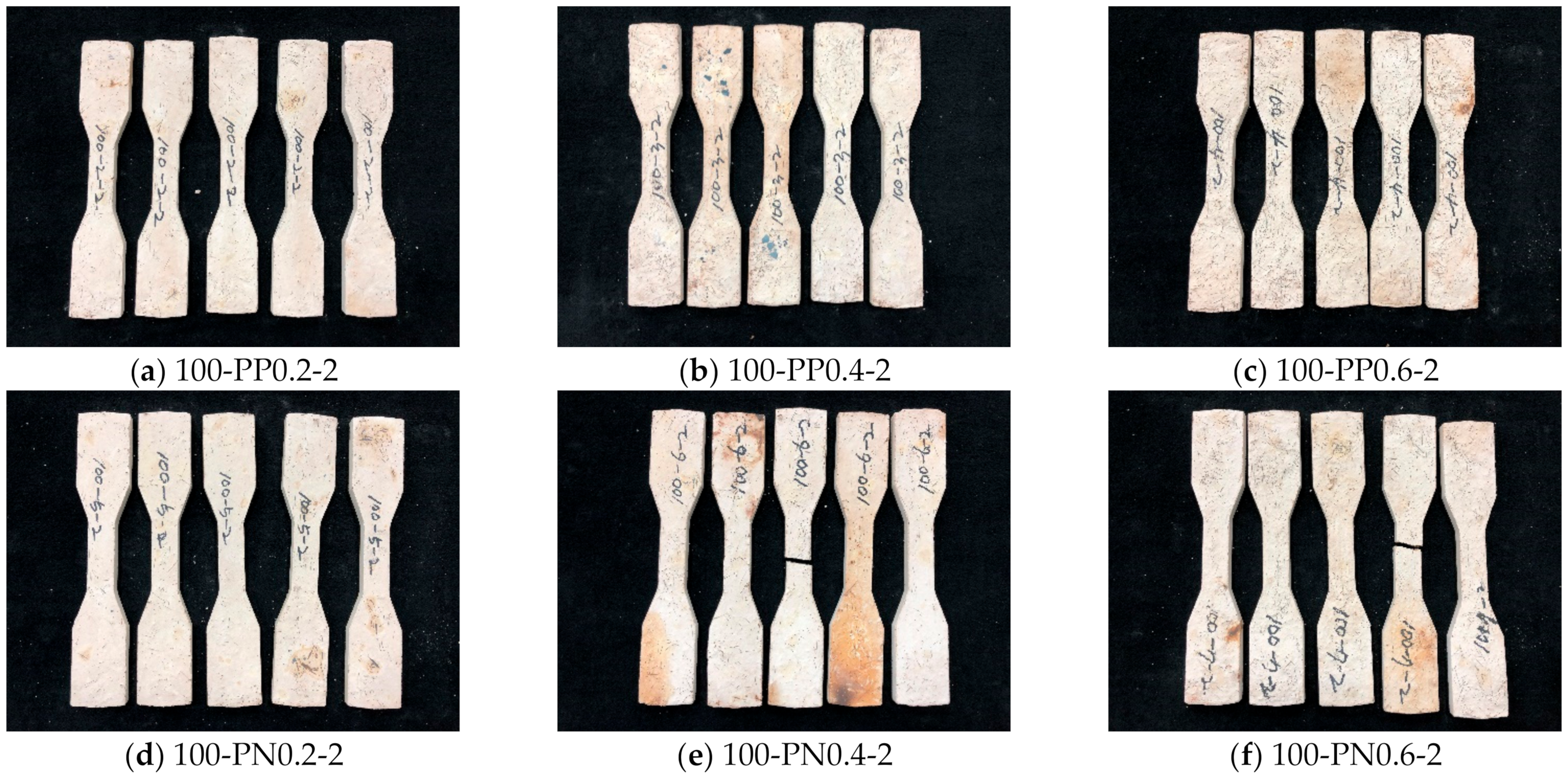
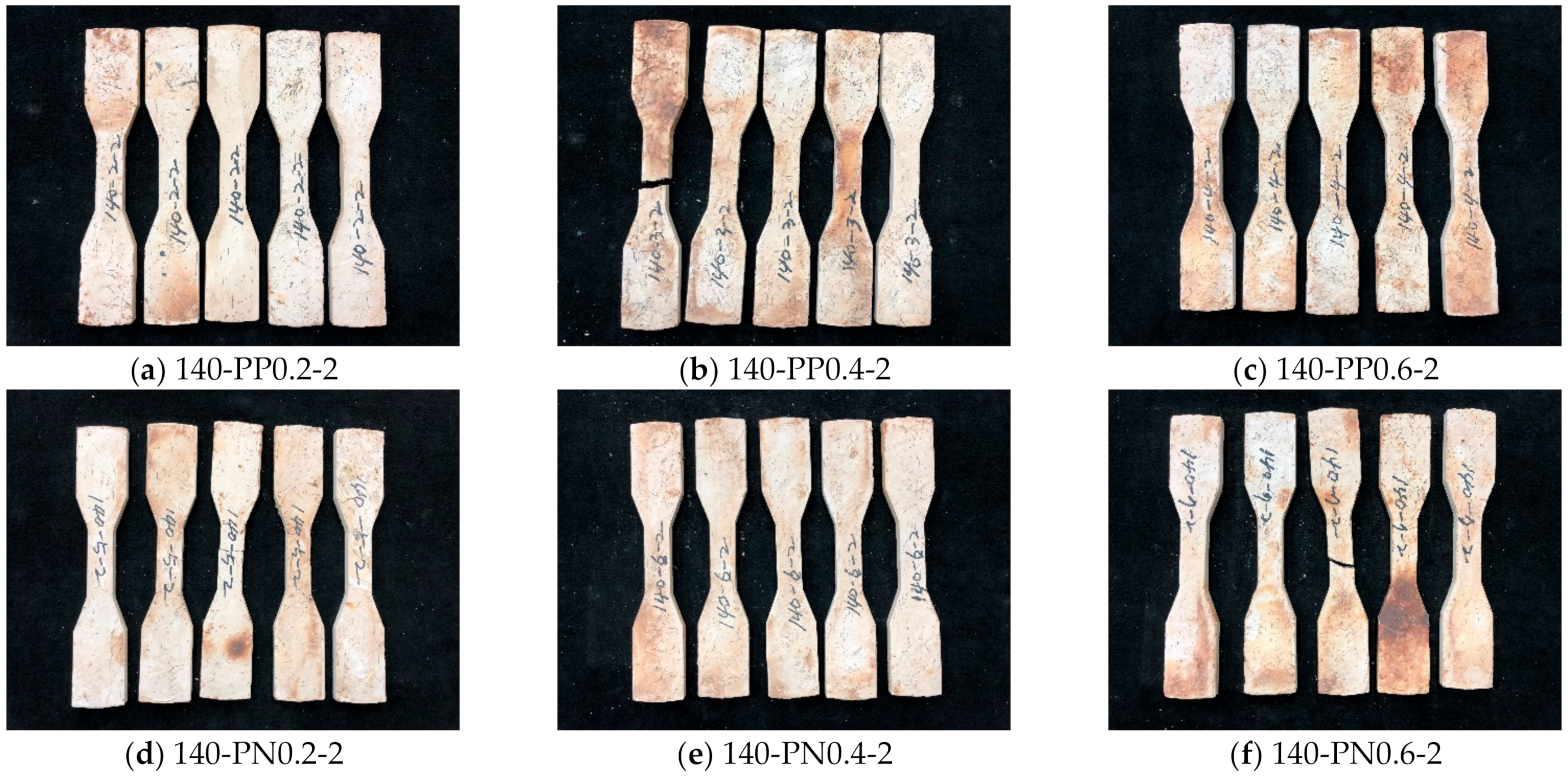
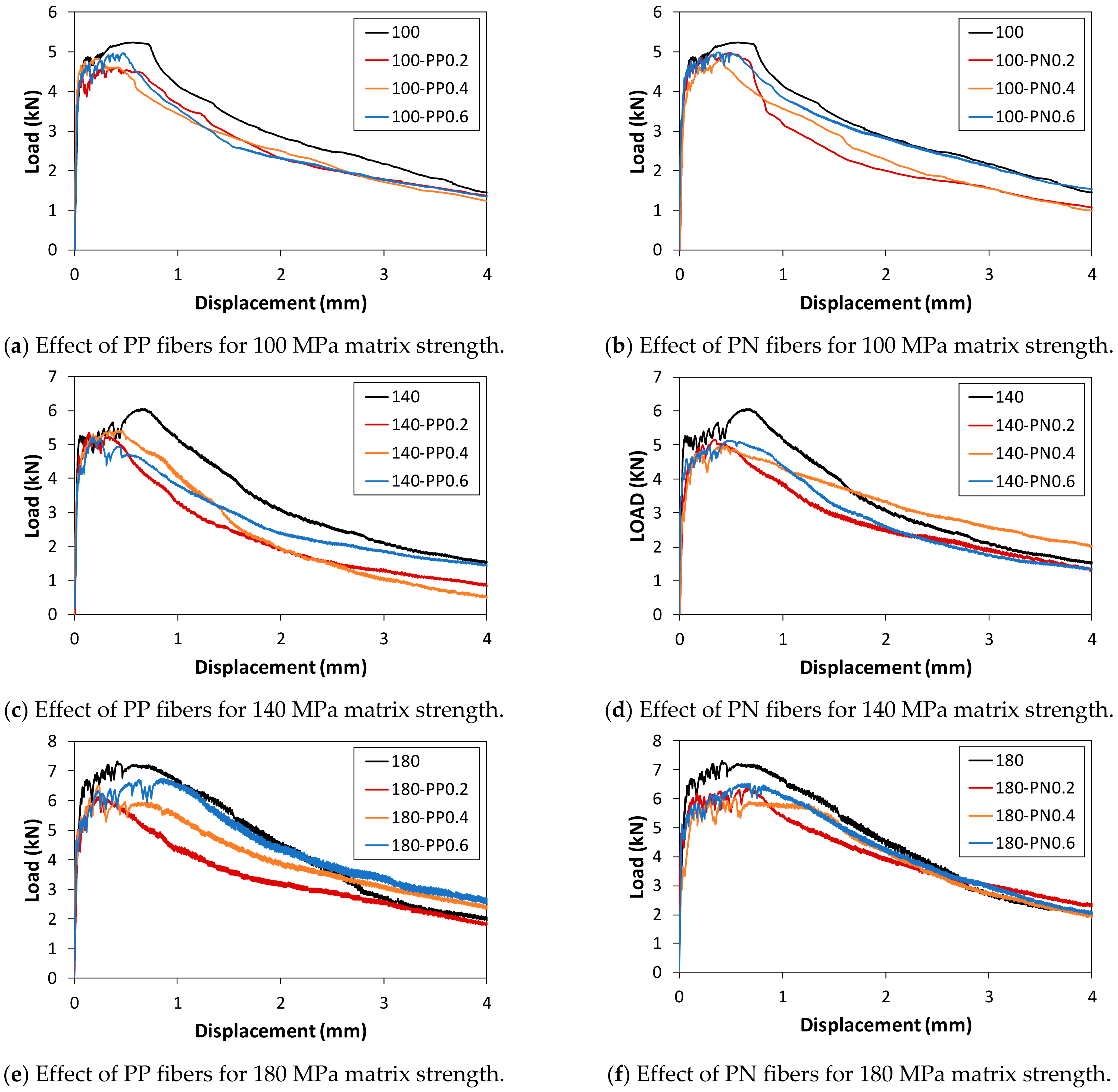
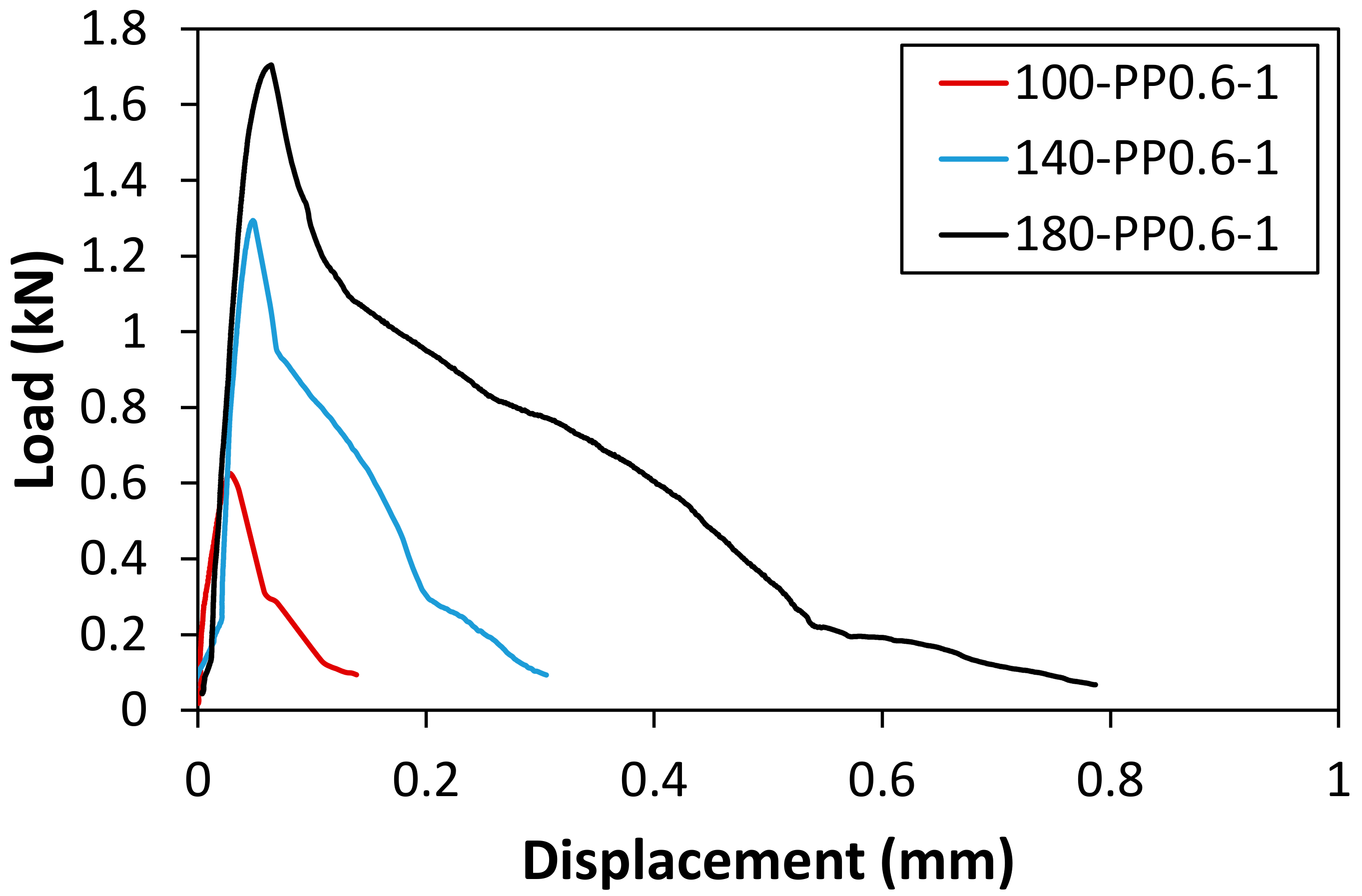
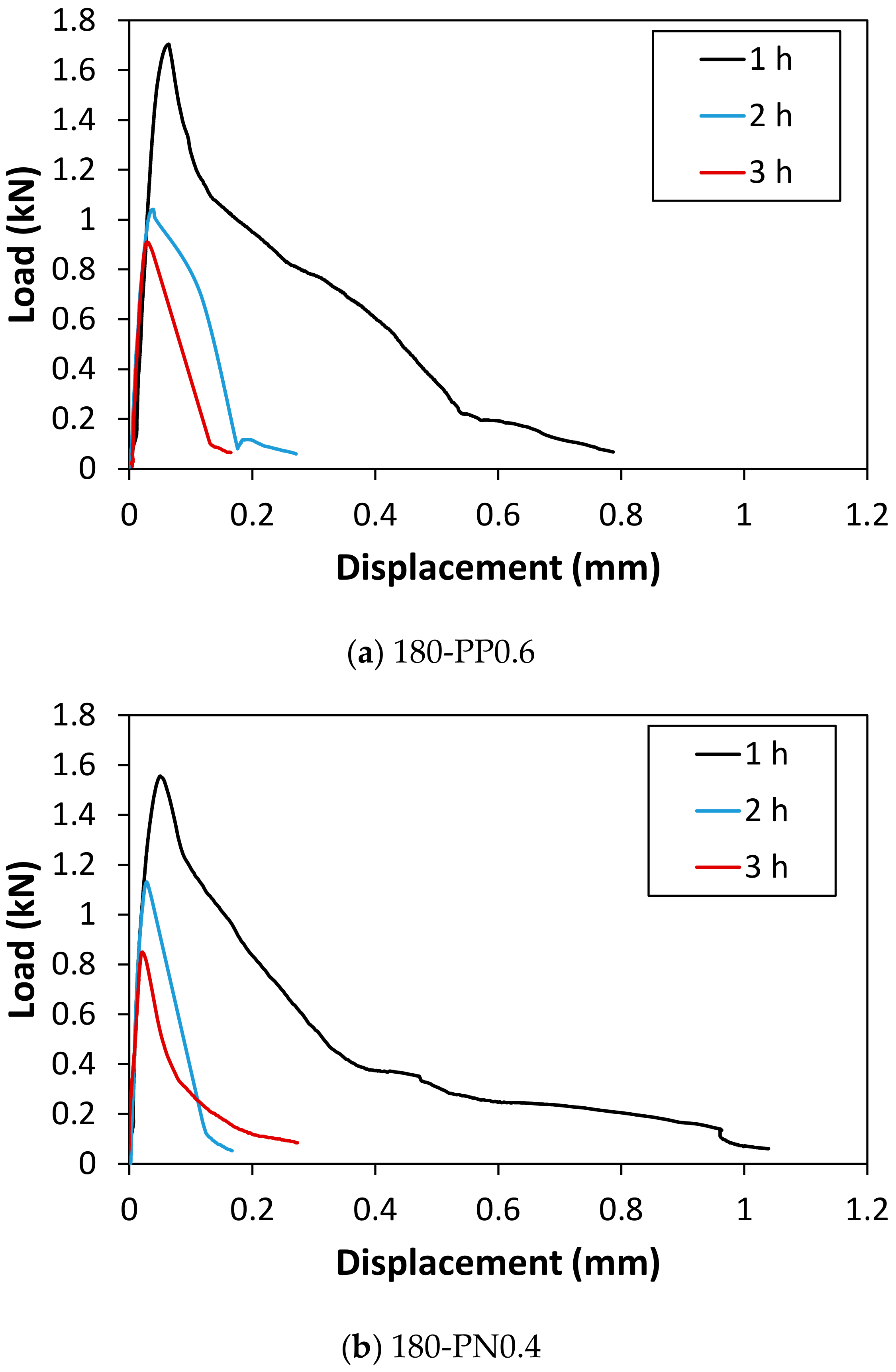
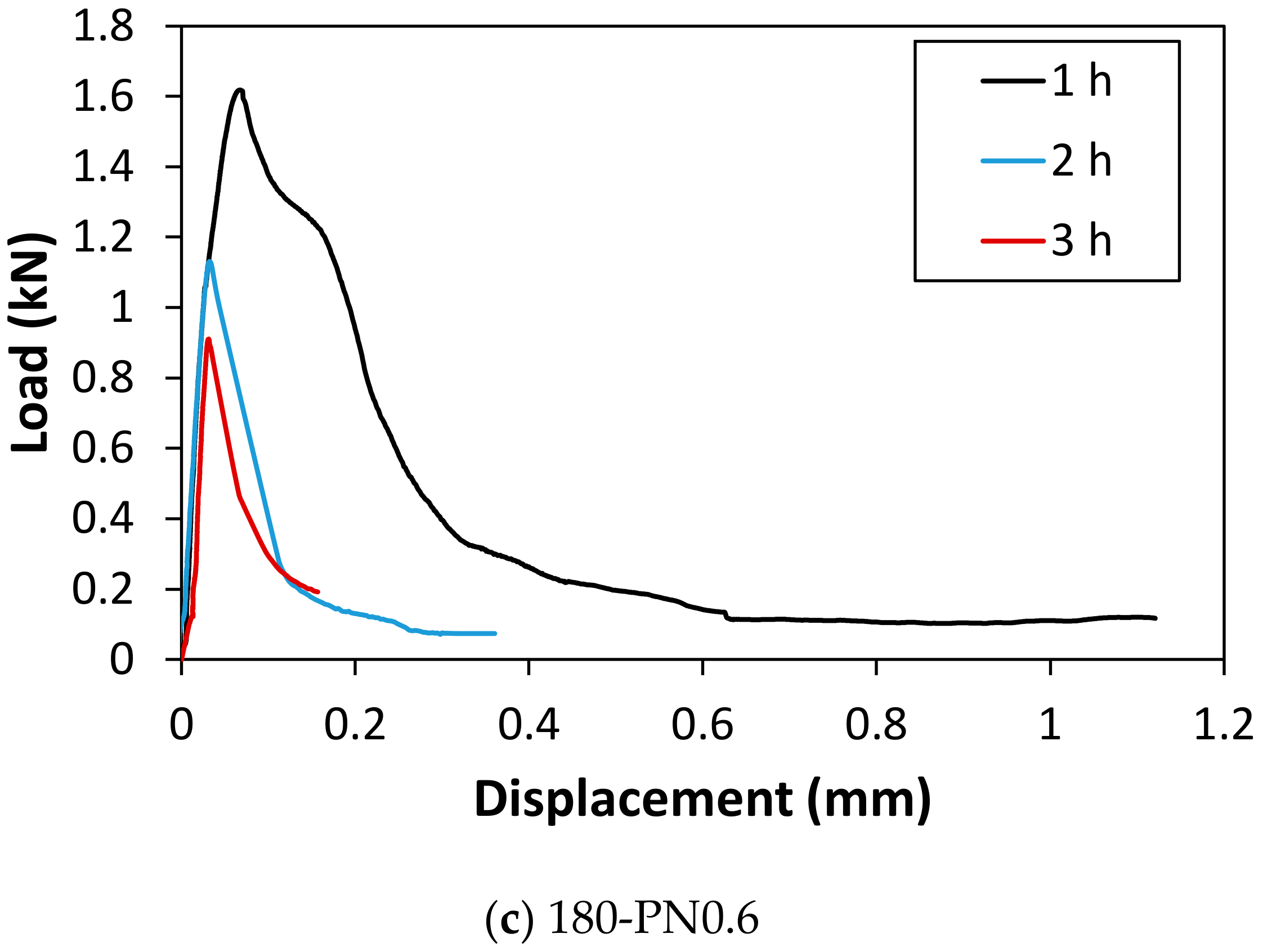
References
- Naaman, A.E.; Reinhardt, H.W. Proposed classification of HPFRC composites based on their tensile response. Mater. Struct. 2006, 39, 547–555. [Google Scholar] [CrossRef]
- Richard, P.; Cheyrezy, M. Composition of reactive powder concretes. Cem. Concr. Res. 1995, 25, 1501–1511. [Google Scholar] [CrossRef]
- Yoo, D.-Y.; Banthia, N. Mechanical properties of ultra-high-performance fiber-reinforced concrete: A review. Cem. Concr. Compos. 2016, 73, 267–280. [Google Scholar] [CrossRef]
- Naaman, A.E. Tensile strain-hardening FRC composites: Historical evoluation since the 1960. In Advances in Construction Matererials; Springer: Berlin/Heidelberg, Germany, 2007; pp. 181–202. [Google Scholar]
- Marcalikova, Z.; Cajka, R.; Bilek, V.; Bujdos, D.; Sucharda, O. Determination of mechanical characteristics for fiber-reinforced concrete with straight and hooked fibers. Crystals 2020, 10, 545. [Google Scholar] [CrossRef]
- Li, V.C.; Wu, H.C. Conditions for pseudo strain-hardening in fiber reinforced brittle matrix composites. Appl. Mech. Rev. 1992, 45, 390–394. [Google Scholar] [CrossRef]
- Abd-Ali, M.S.; Essa, A.A.A. Mechanical properties of slurry infiltrated fibrous concrete (SIFCON) with variation steel fiber ratios and silica fume. J. Adv. Res. Dyn. Control. Syst. 2019, 11, 1863–1872. [Google Scholar]
- Kim, D.-J.; Naaman, A.E.; El-Tawil, S. High Performance Fiber Reinforced Cement Composites with Innovative Slip Hardending Twisted Steel Fibers. Int. J. Concr. Struct. Mater. 2009, 3, 119–126. [Google Scholar] [CrossRef]
- Kodur, V.K.R. Spalling in High Strength Concrete Exposed to Fire—Concerns, Causes, Critical Parameters and Cures; Institute for Research in Construction, National Research Council of Canada: Ottawa, ON, Canada, 2000.
- Lee, S.-H.; Park, J.-S.; Baek, D.-H.; Yoon, S.-H.; Jeon, C.-S. Development of Standard Fire Resistance Structure for High Strength Concrete over 50 MPa, Technical Report (TRKO201500000254); Korea Institute of Civil Engineering and Building Technology (KICT): Goyang-si, Korea, 2013. [Google Scholar]
- Liu, J.C.; Tan, K.H. Mechanism of PVA fibers in mitigating explosive spalling of engineered cementitious composite at elevated temperature. Cem. Concr. Compos. 2018, 93, 235–245. [Google Scholar] [CrossRef]
- Sahmaran, M.; Lachemi, M.; Li, V.C. Assessing mechanical properties and microstructure of fire-damaged engineered cementitious composites. ACI Mater. J. 2010, 107, 297–304. [Google Scholar] [CrossRef]
- Zheng, W.; Luo, B.; Wang, Y. Stress–strain relationship of steel-fibre reinforced reactive powder concrete at elevated temperatures. Mater. Struct. Constr. 2015, 48, 2299–2314. [Google Scholar] [CrossRef]
- Beglarigale, A.; Yalçinkaya, C.; Yigiter, H.; Yazici, H. Flexural performance of SIFCON composites subjected to high temperature. Constr. Build. Mater. 2016, 104, 99–108. [Google Scholar] [CrossRef]
- Alberti, M.G.; Gálvez, J.C.; Enfedaque, A.; Castellanos, R. Influence of high temperature on the fracture properties of polyolefin fibre reinforced concrete. Materials 2021, 14, 601. [Google Scholar] [CrossRef]
- So, H.S.; Yi, J.B.; Khulgadai, J.; So, S.Y. Properties of strength and pore structure of reactive powder concrete exposed to high temperature. ACI Mater. J. 2014, 111, 335–345. [Google Scholar] [CrossRef]
- Park, J.J.; Yoo, D.Y.; Kim, S.; Kim, S.W. Benefits of synthetic fibers on the residual mechanical performance of UHPFRC after exposure to ISO standard fire. Cem. Concr. Compos. 2019, 104, 103401. [Google Scholar] [CrossRef]
- Organization International Standards. ISO 834: Fire Resistance Tests, Elements of Building Construction; International Organisation for Standardization: Geneva, Switzerland, 1980. [Google Scholar]
- Xiong, M.X.; Liew, J.Y.R. Spalling behavior and residual resistance of fibre reinforced Ultra-High performance concrete after exposure to high temperatures. Mater. Constr. 2015, 65, e071. [Google Scholar] [CrossRef]
- Yoo, D.Y.; Park, J.J.; Kim, S.W. Fiber pullout behavior of HPFRCC: Effects of matrix strength and fiber type. Compos. Struct. 2017, 174, 263–276. [Google Scholar] [CrossRef]
- Park, G.-J.; Kim, W.-W.; Park, J.-J.; Moon, J.-H.; Kim, S.-W. Evaluation of Dynamic Tensile Strength of HPFRCC According to Compressive Strength Level. J. Korea Inst. Struct. Maint. Insp. 2018, 22, 31–37. [Google Scholar]
- Yoo, D.Y.; Banthia, N.; Yang, J.M.; Yoon, Y.S. Mechanical properties of corrosion-free and sustainable amorphous metallic fiber-reinforced concrete. ACI Mater. J. 2016, 113, 633–643. [Google Scholar] [CrossRef]
- Collepardi, S.; Coppola, L.; Troli, R.; Collepardi, M. Mechanical properties of modified reactive powder concrete. ACI Spec. Publ. 1997, 173, 1–22. [Google Scholar]
- Kim, S.; Kim, D.J.; Kim, S.W.; Park, C. Tensile behavior characteristics of high-performance slurry-infiltrated fiber-reinforced cementitious composite with respect to fiber volume fraction. Materials 2019, 12, 335. [Google Scholar] [CrossRef]
- Kaïkea, A.; Achoura, D.; Duplan, F.; Rizzuti, L. Effect of mineral admixtures and steel fiber volume contents on the behavior of high performance fiber reinforced concrete Adel. Mater. Des. 2014, 63, 493–499. [Google Scholar] [CrossRef]
- Lee, G.; Han, D.; Han, M.C.; Han, C.G.; Son, H.J. Combining polypropylene and nylon fibers to optimize fiber addition for spalling protection of high-strength concrete. Constr. Build. Mater. 2012, 34, 313–320. [Google Scholar] [CrossRef]
- JSCE Concrete Cinnuttee. Recommendations for Design and Construction of High Performance Fiber Reinforced Cement Composites With Multiple Fine Cracks (HPFRCC); Japan Society of Civil Engineers: Tokyo, Japan, 2008. [Google Scholar]
- Kanakubo, T. Tensile characteristics evaluation method for ductile fiber-reinforced cementitious composites. J. Adv. Concr. Technol. 2006, 4, 3–17. [Google Scholar] [CrossRef]
- Korean Standard Association. KS F 2257-1. Method of Fire Resistance Test for Elements of Building Construction—General Requirements; Korean Standard Association: Seoul, Korea, 2014. [Google Scholar]
- Lura, P.; Terrasi, G.P. Reduction of fire spalling in high-performance concrete by means of superabsorbent polymers and polypropylene fibers: Small scale fire tests of carbon fiber reinforced plastic-prestressed self-compacting concrete. Cem. Concr. Compos. 2014, 49, 36–42. [Google Scholar] [CrossRef]
- Peng, G.; Yang, W.; Zhao, J.; Liu, Y.; Bian, S.; Zhao, L. Explosive spalling and residual mechanical properties of fiber-toughened high-performance concrete subjected to high temperatures. Cem. Concr. Res. 2006, 36, 723–727. [Google Scholar] [CrossRef]
- Heo, Y.S.; Sanjayan, J.G.; Han, C.G.; Han, M.C. Synergistic effect of combined fibers for spalling protection of concrete in fire. Cem. Concr. Res. 2010, 40, 1547–1554. [Google Scholar] [CrossRef]
- Chi, Y.; Xu, L.; Yu, H.S. Constitutive modeling of steel-polypropylene hybrid fiber reinforced concrete using a non-associated plasticity and its numerical implementation. Compos. Struct. 2014, 111, 497–509. [Google Scholar] [CrossRef]
- Afroughsabet, V.; Biolzi, L.; Ozbakkaloglu, T. High-performance fiber-reinforced concrete: A review. J. Mater. Sci. 2016, 51, 6517–6551. [Google Scholar] [CrossRef]
- Huang, L.; Chi, Y.; Xu, L.; Chen, P.; Zhang, A. Local bond performance of rebar embedded in steel-polypropylene hybrid fiber reinforced concrete under monotonic and cyclic loading. Constr. Build. Mater. 2016, 103, 77–92. [Google Scholar] [CrossRef]
- Heinz, D.; Dehn, F.; Urbonas, L. Fire Resistance of Ultra High Performance Concrete (UHPC)—Testing of Laboratory Samples and Columns under Load. In Proceedings of the International Symposium on Ultra High Performance Concrete (UHPC), Kassel, Germany, 13–15 September 2004. [Google Scholar]
- Yoo, D.Y.; Kim, S.; Park, G.J.; Park, J.J. Residual performance of HPFRCC exposed to fire—Effects of matrix strength, synthetic fiber, and fire duration. Constr. Build. Mater. 2020, 241, 118038. [Google Scholar] [CrossRef]

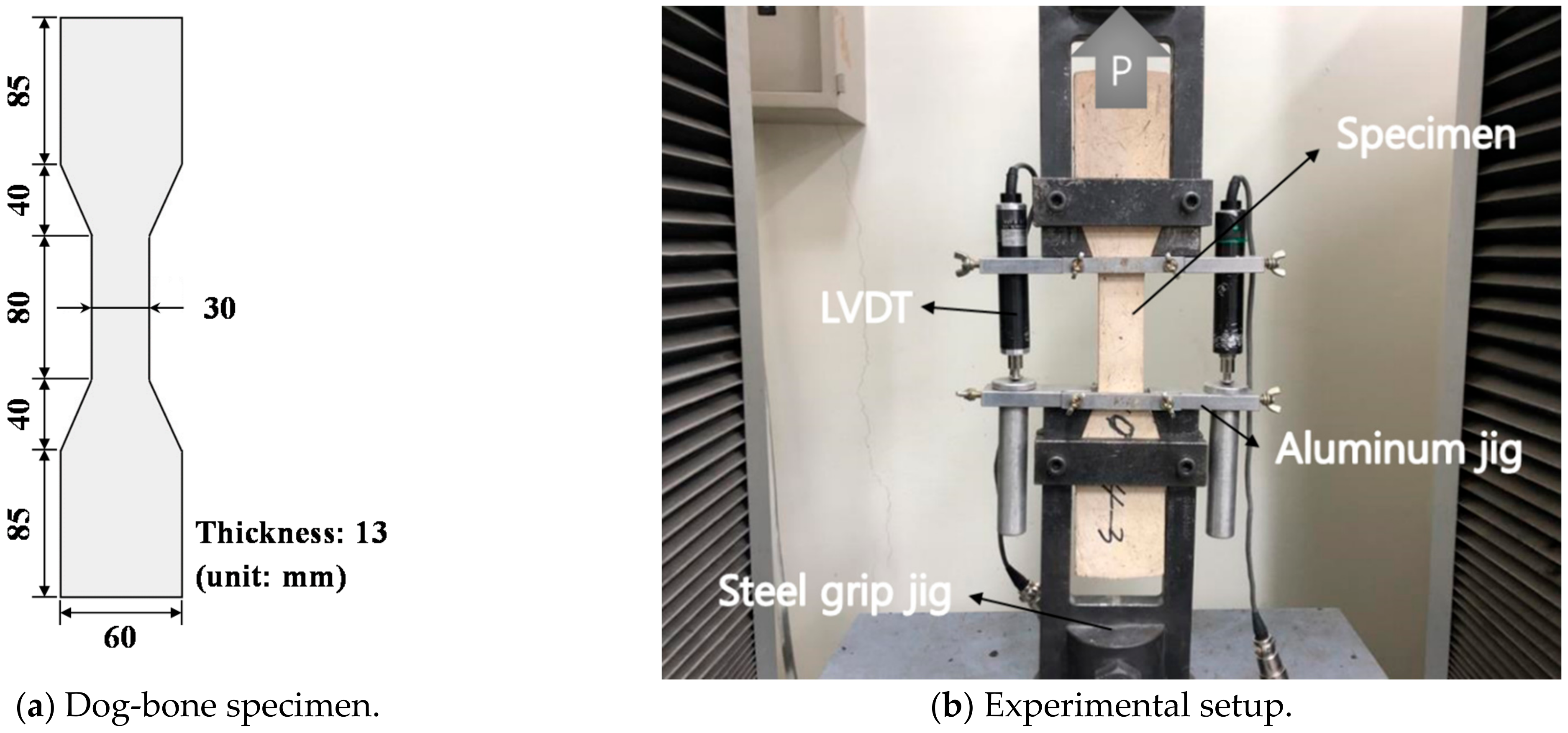
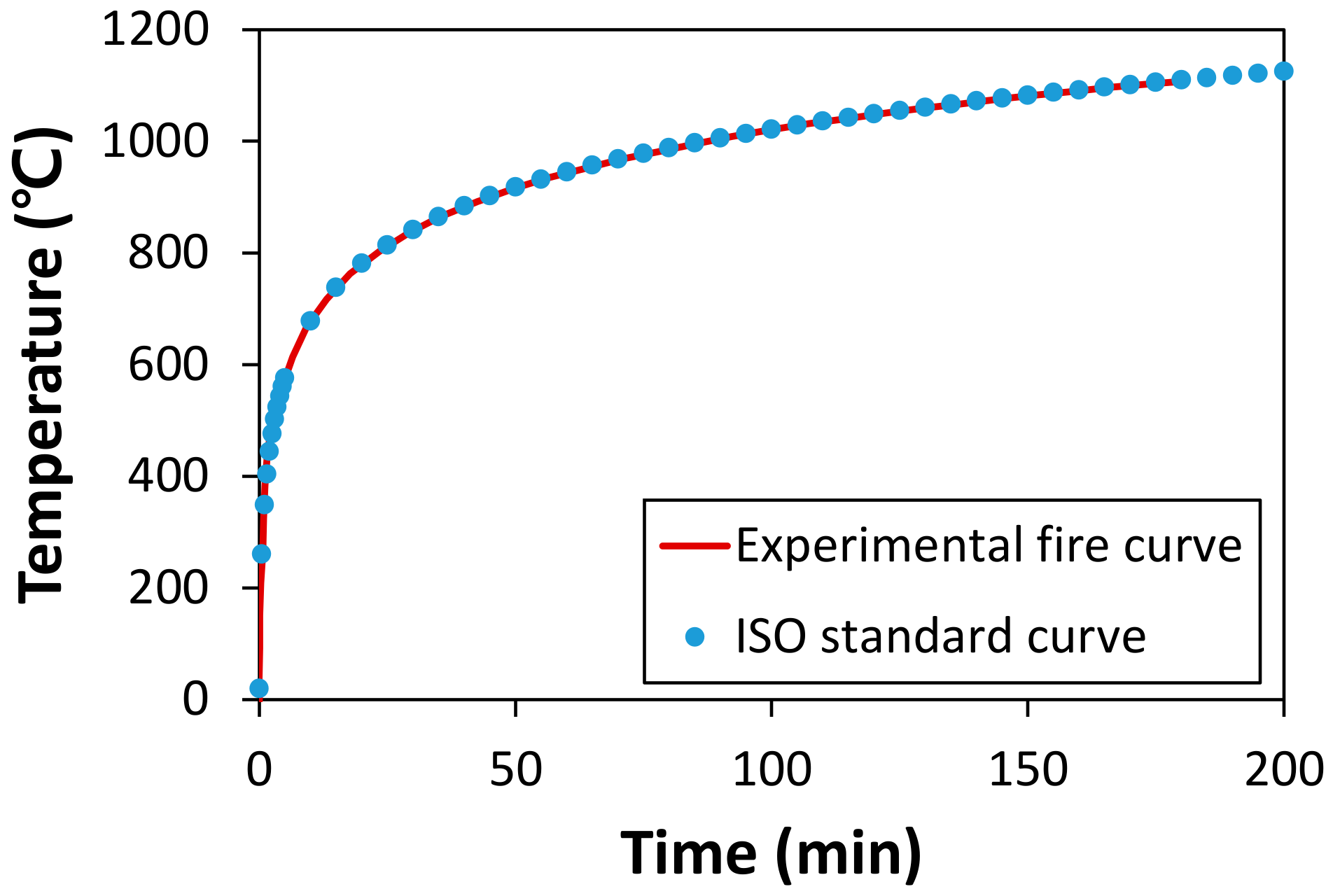
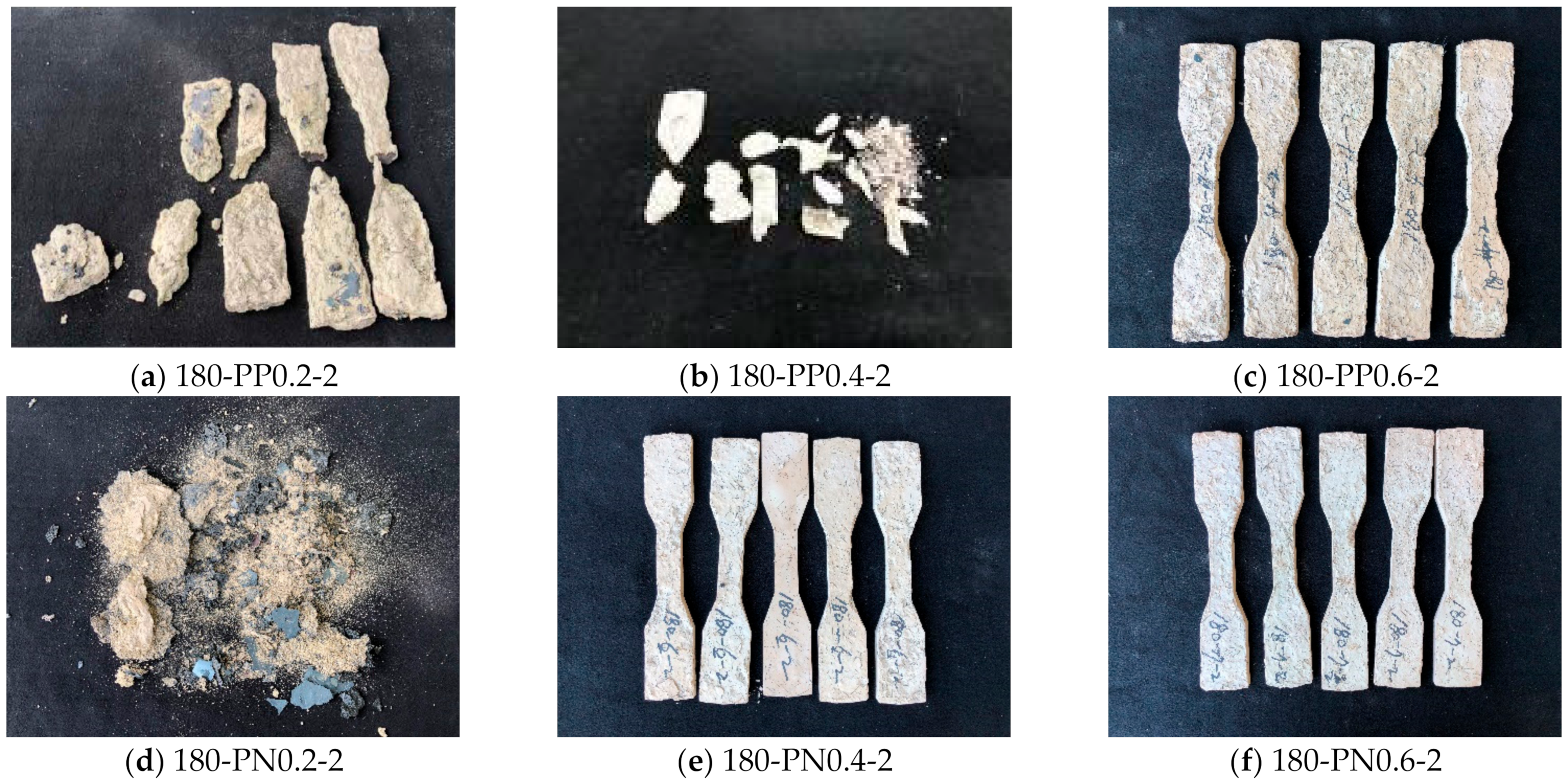
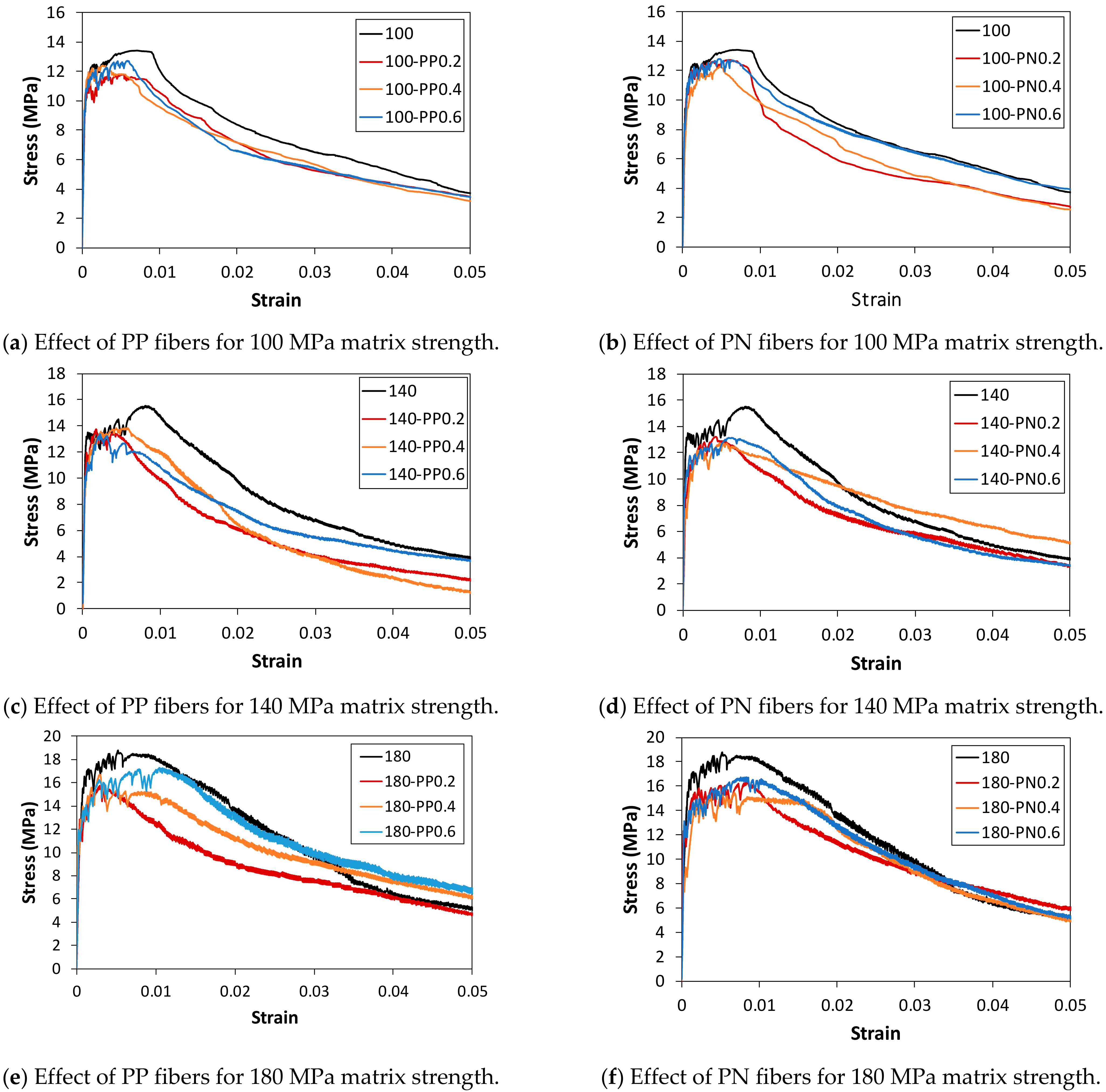
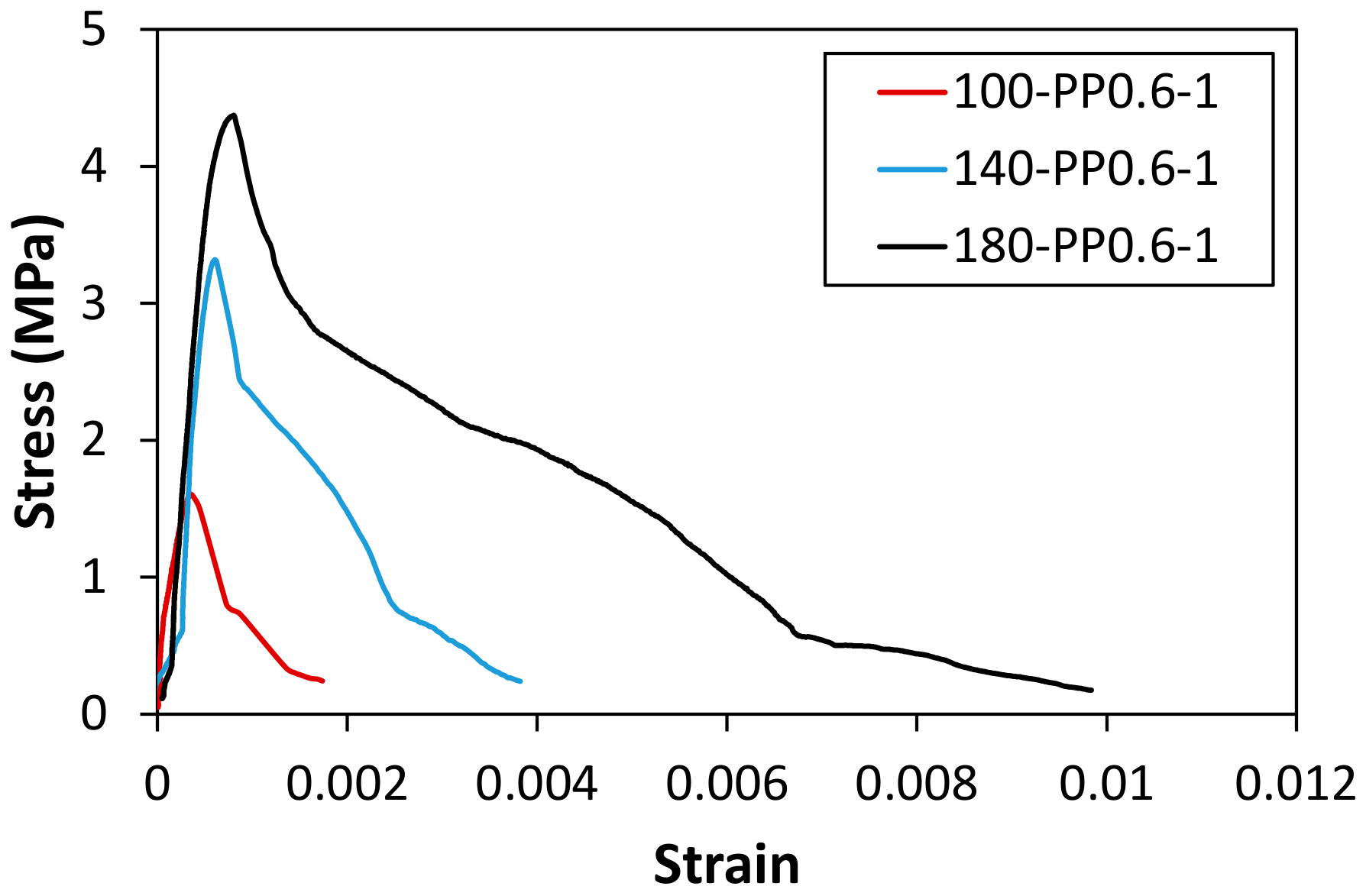
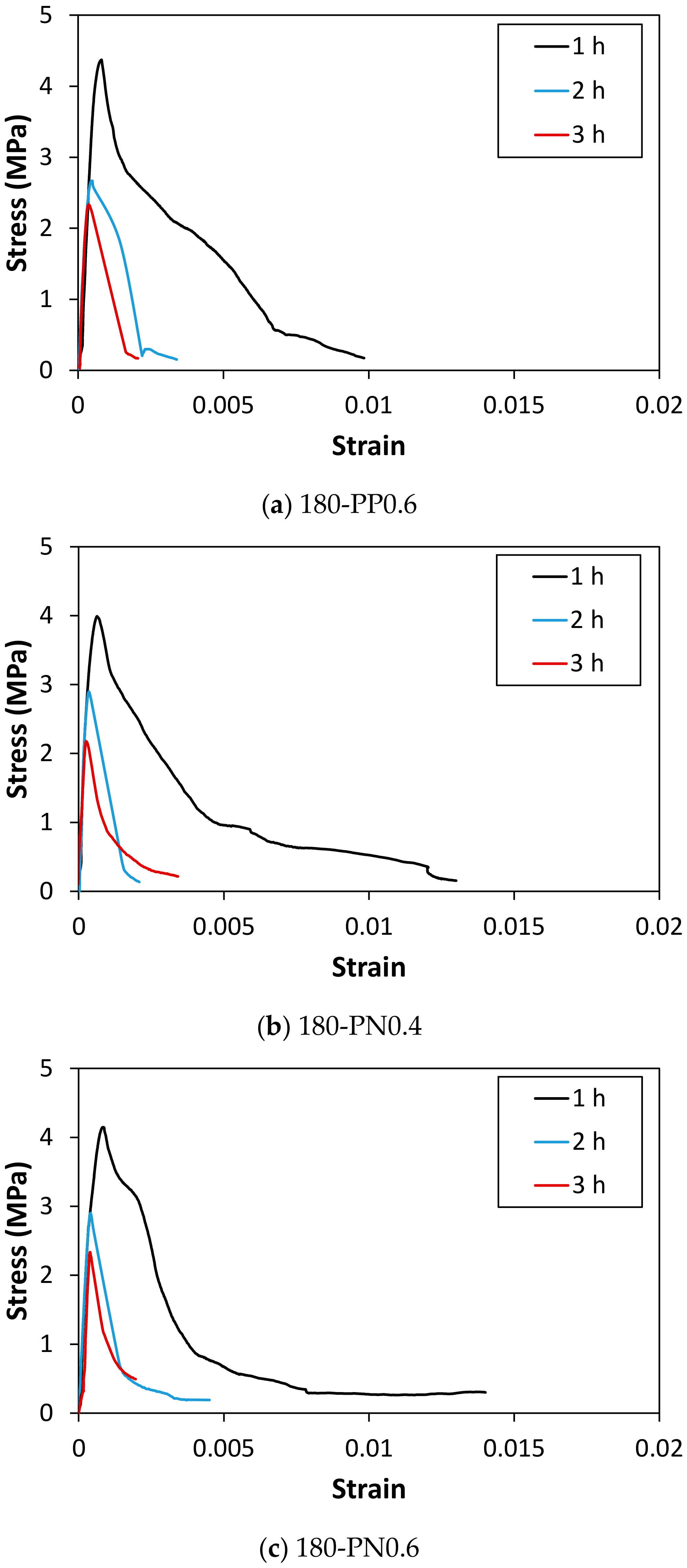
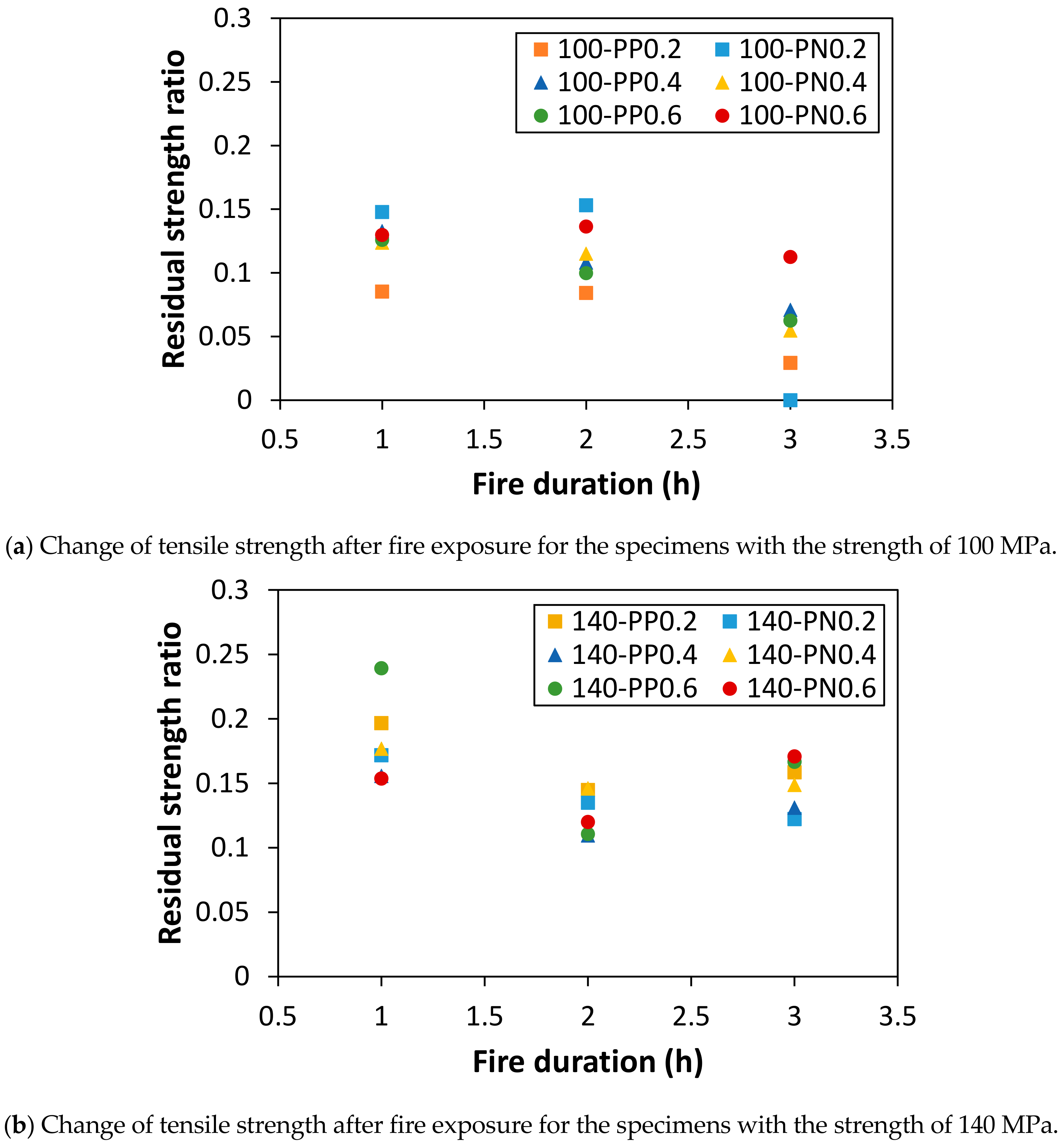
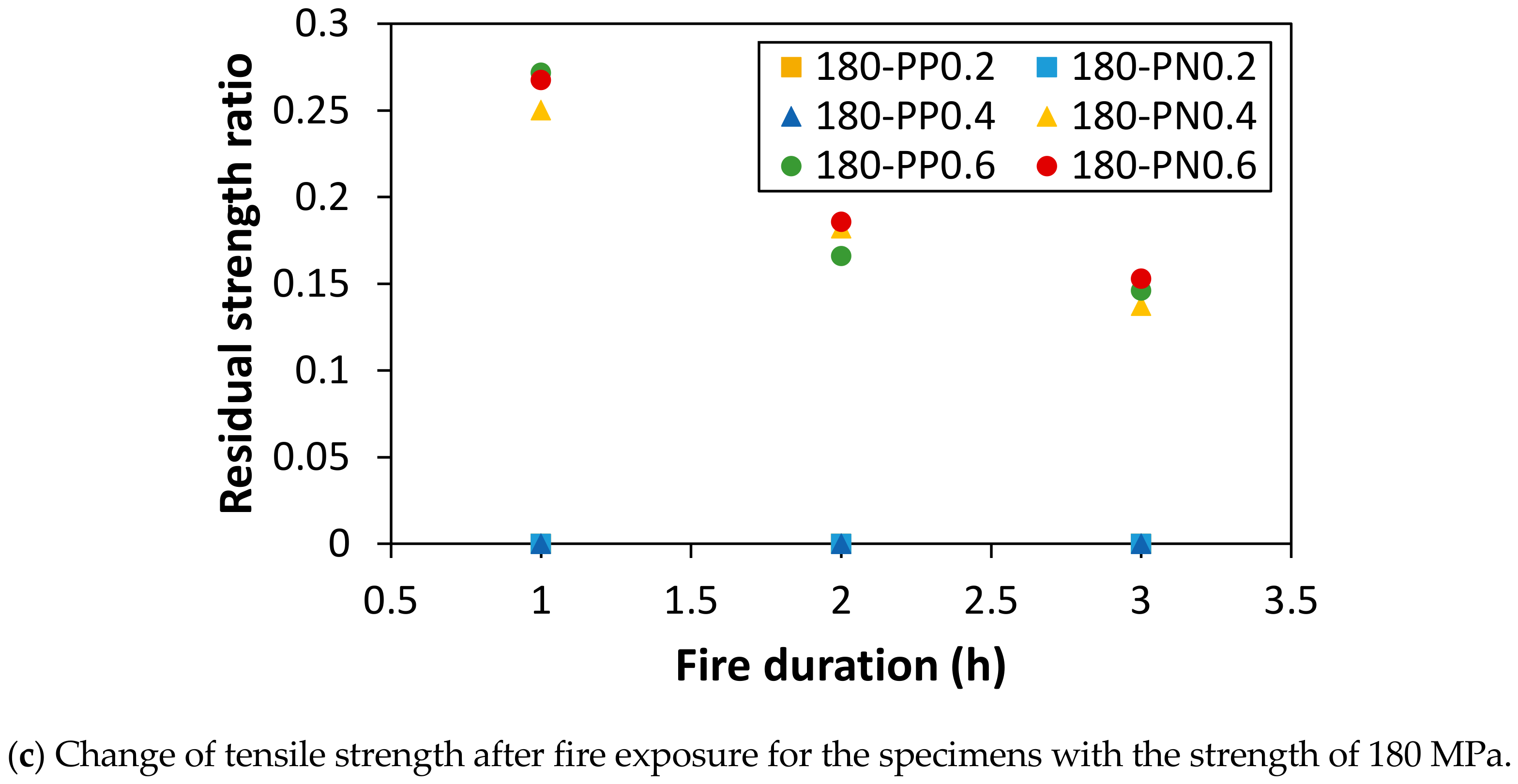
| ID | W/B | Mix Composition (kg/m3) | ||||||||||
|---|---|---|---|---|---|---|---|---|---|---|---|---|
| Water | Cement | Silica Fume | Fly Ash | GGBS | Silica Flour | Silica Sand | SP | SRA | Steel Fiber | |||
| 100 | 100 | 0.28 | 248.4 | 704.4 | 70.5 | 140.9 | - | 140.9 | 845.3 | 11.1 | 4.6 | 156.0 |
| 140 | 140 | 0.25 | 222.8 | 739.2 | 73.9 | - | 147.8 | 221.8 | 813.2 | 24.3 | 4.8 | 156.0 |
| 180 | 180 | 0.2 | 163.0 | 783.6 | 195.9 | - | - | 235.1 | 861.9 | 47.0 | 4.9 | 156.0 |
| Cement | Silica Fume | GGBS | Fly Ash | ||
|---|---|---|---|---|---|
| Chemical composition (%) | SiO2 | 21.01 | 96.00 | 33.80 | 65.3 |
| Al2O3 | 6.40 | 0.25 | 14.50 | 16.60 | |
| Fe2O3 | 3.12 | 0.12 | 0.01 | 5.58 | |
| CaO | 61.33 | 0.38 | 42.1 | - | |
| MgO | 3.02 | 0.1 | 5.80 | 0.82 | |
| SO3 | 2.15 | - | 1.89 | 0.51 | |
| Surface area (cm2/g) | 3413 | 200,000 | 6240 | 3850 | |
| Density (g/cm3) | 3.15 | 2.10 | 2.91 | 2.13 | |
| Loss on ignition (%) | 1.40 | 1.50 | 0.05 | 3.852 |
| Diameter (μm) | Length (mm) | Density (g/cm3) | Tensile Strength (MPa) | Elastic Modulus (GPa) | Melting Temperature (°C) | |
|---|---|---|---|---|---|---|
| Steel fiber | 200 | 19.5 | 7.8 | 2500 | 200 | 1538 |
| PP fiber | 30 | 19 | 0.91 | 560 | 1.4–2.2 | 160.40 |
| Ny fiber | 16–28 | 9 | 1.1 | 918 | 3.9–4.9 | 220.21 |
| ID | Volume Fraction (%)/Fiber Dosage (g) | Fire Duration (h) | ||
|---|---|---|---|---|
| Steel Fiber | PP Fiber | NY Fiber | ||
| # (100, 140, or 180) | 2.0/32.85 | |||
| #-PP0.2-1 | 2.0/32.85 | 0.2/0.383 | - | 1 |
| #-PP0.2-2 | 2 | |||
| #-PP0.2-3 | 3 | |||
| #-PP0.4-1 | 2.0/32.85 | 0.4/0.767 | - | 1 |
| #-PP0.4-2 | 2 | |||
| #-PP0.4-3 | 3 | |||
| #-PP0.6-1 | 2.0/32.85 | 0.6/1.150 | - | 1 |
| #-PP0.6-2 | 2 | |||
| #-PP0.6-3 | 3 | |||
| #-PN0.2-1 | 2.0/32.85 | 0.1/0.192 | 0.1/0.232 | 1 |
| #-PN0.2-2 | 2 | |||
| #-PN0.2-3 | 3 | |||
| #-PN0.4-1 | 2.0/32.85 | 0.2/0.383 | 0.2/0.463 | 1 |
| #-PN0.4-2 | 2 | |||
| #-PN0.4-3 | 3 | |||
| #-PN0.6-1 | 2.0/32.85 | 0.3/0.575 | 0.3/0.695 | 1 |
| #-PN0.6-2 | 2 | |||
| #-PN0.6-3 | 3 | |||
| ID | (MPa) (Before Test) | (GPa) | Toughness (kJ/m3) | (MPa) (After Test) | ||
|---|---|---|---|---|---|---|
| 1 h | 2 h | 3 h | ||||
| 100 | 13.41 (0.076) | 34.97 (0.179) | 401.9 (0.114) | - | - | - |
| 140 | 15.53 (0.013) | 39.41 (0.306) | 442.5 (0.134) | - | - | - |
| 180 | 18.78 (0.050) | 44.61 (0.201) | 730.3 (0.221) | - | - | - |
| 100-PP0.2 | 11.79 (0.113) | 28.61 (0.214) | 345.2 (0.055) | 1.01 (0.305) | 0.993 (0.362) | 0.35 (0.044) |
| 100-PP0.4 | 12.40 (0.083) | 31.03 (0.174) | 341.6 (0.138) | 1.65 (0.201) | 1.34 (0.081) | 0.88 (0.568) |
| 100-PP0.6 | 12.72 (0.056) | 33.36 (0.207) | 343.1 (0.041) | 1.60 (0.163) | 1.27 (0.151) | 0.80 (0.421) |
| 100-PN0.2 | 12.73 (0.142) | 32.01 (0.196) | 317.5 (0.142) | 1.88 (0.170) | 1.95 (0.168) | - |
| 100-PN0.4 | 12.27 (0.123) | 31.25 (0.167) | 325.6 (0.149) | 1.52 (0.192) | 1.41 (0.200) | 0.67 (0.067) |
| 100-PN0.6 | 12.79 (0.079) | 32.79 (0.341) | 384.8 (0.098) | 1.66 (0.282) | 1.75 (0.072) | 1.44 (0.093) |
| 140-PP0.2 | 13.74 (0.065) | 36.76 (0.508) | 331.5 (0.166) | 2.71 (0.268) | 1.99 (0.290) | 2.18 (0.184) |
| 140-PP0.4 | 13.83 (0.127) | 37.17 (0.272) | 342.8 (0.155) | 2.15 (0.263) | 1.52 (0.069) | 1.81 (0.676) |
| 140-PP0.6 | 13.37 (0.030) | 36.38 (0.296) | 340.0 (0.073) | 3.20 (0.243) | 1.48 (0.191) | 2.23 (0.207) |
| 140-PN0.2 | 13.18 (0.113) | 35.79 (0.404) | 360.5 (0.114) | 2.27 (0.316) | 1.78 (0.456) | 1.61 (0.543) |
| 140-PN0.4 | 12.73 (0.127) | 38.99 (0.391) | 430.9 (0.028) | 2.25 (0.452) | 1.86 (0.108) | 1.90 (0.316) |
| 140-PN0.6 | 13.14 (0.049) | 38.60 (0.296) | 375.9 (0.090) | 2.02 (0.483) | 1.58 (0.368) | 2.25 (0.031) |
| 180-PP0.2 | 15.73 (0.065) | 42.48 (0.355) | 447.2 (0.221) | - | - | - |
| 180-PP0.4 | 16.66 (0.092) | 40.24 (0.427) | 527.3 (0.230) | - | - | - |
| 180-PP0.6 | 17.29 (0.096) | 43.77 (0.430) | 584.4 (0.148) | 4.37 (0.082) | 2.33 (0.186) | 2.35 (0.255) |
| 180-PN0.2 | 16.33 (0.039) | 41.35 (0.272) | 528.5 (0.116) | - | - | - |
| 180-PN0.4 | 15.48 (0.036) | 42.62 (0.271) | 522.1 (0.226) | 3.98 (0.068) | 2.38 (0.177) | 2.19 (0.237) |
| 180-PN0.6 | 16.72 (0.094) | 42.60 (0.421) | 549.0 (0.234) | 3.87 (0.104) | 2.85 (0.171) | 2.35 (0.296) |
Publisher’s Note: MDPI stays neutral with regard to jurisdictional claims in published maps and institutional affiliations. |
© 2021 by the authors. Licensee MDPI, Basel, Switzerland. This article is an open access article distributed under the terms and conditions of the Creative Commons Attribution (CC BY) license (http://creativecommons.org/licenses/by/4.0/).
Share and Cite
Park, G.-K.; Park, G.-J.; Park, J.-J.; Lee, N.; Kim, S.-W. Residual Tensile Properties and Explosive Spalling of High-Performance Fiber-Reinforced Cementitious Composites Exposed to Thermal Damage. Materials 2021, 14, 1608. https://doi.org/10.3390/ma14071608
Park G-K, Park G-J, Park J-J, Lee N, Kim S-W. Residual Tensile Properties and Explosive Spalling of High-Performance Fiber-Reinforced Cementitious Composites Exposed to Thermal Damage. Materials. 2021; 14(7):1608. https://doi.org/10.3390/ma14071608
Chicago/Turabian StylePark, Gang-Kyu, Gi-Joon Park, Jung-Jun Park, Namkon Lee, and Sung-Wook Kim. 2021. "Residual Tensile Properties and Explosive Spalling of High-Performance Fiber-Reinforced Cementitious Composites Exposed to Thermal Damage" Materials 14, no. 7: 1608. https://doi.org/10.3390/ma14071608
APA StylePark, G.-K., Park, G.-J., Park, J.-J., Lee, N., & Kim, S.-W. (2021). Residual Tensile Properties and Explosive Spalling of High-Performance Fiber-Reinforced Cementitious Composites Exposed to Thermal Damage. Materials, 14(7), 1608. https://doi.org/10.3390/ma14071608






